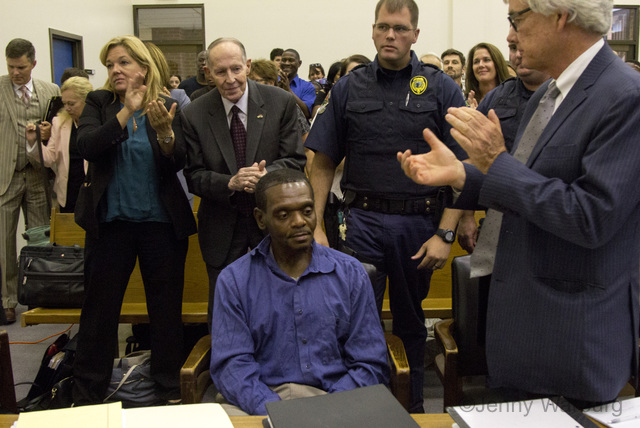
Eight years ago, I posted about my introduction, early in my legal career, to the case of Michael Pinch. The trial transcript and the court opinions painted a picture of Michael as a cold-blooded killer. I didn’t tell the rest of the story, hoping one day to get back there but never doing so.
It turned out that Michael was the most “normal” man on death row that I would ever meet. He was well-spoken, handsome, polite, humble, and remorseful.
As my co-counsel and I investigated Michael’s case, we discovered that Michael was universally liked. Eventually, we uncovered evidence withheld by the prosecutor at trial to show that Michael could not have premeditated the shootings and showed extreme upset after them.
Last year, one blogger wrote this useful summary of Michael’s case:
“Former deputy state attorney general Joan Byers Erwin publicly said in 1996 that Michael Pinch should not be put to death even though it was her job to oppose his appeals and fight for his execution. Erwin had been hearing testimonials about Michael from lawyers and others for 15 years. She said the case did not “have the feel of a death case… The person the jury saw is not the person he really is.”
“Ken Harris, former Central Prison associate warden, used Michael to counsel young troublemakers. “Mike always had something intelligent and beneficial to hear,” Harris told the Greensboro News and Record. “He’d tell them, ‘Look, if you don’t change now, if you don’t get yourself off of drugs and alcohol, if you don’t change your attitudes, you can end up right where I am.’” Harris echoed the sentiment that many officers felt when dealing with Michael. “I’m old-school and hard to fool… But Mike’s above-board. I think the world of him”
“Convicted and sentenced to death for the 1979 shotgun slayings of 19-year-old Freddie Pacheco and 18-year-old Tommie Ausley [the same age as Pinch] at a Greensboro bikers club, Michael Pinch spent a quarter century on death row before an appellate court found the police and prosecutors withheld evidence. They hid the fact that Pacheco and Ausley were small-time drug dealers and that Pacheco had stabbed at least four people. The court acknowledged such information would have helped Pinch’s attorneys prove the murders were not premeditated.” (Lyle May, “Why North Carolina keeps many parole-eligible prisoners behind bars,” July 8, 2019, at https://www.scalawagmagazine.org/2019/07/nc-parole-death-row/)
Now for the update. I am happy to report that Michael Pinch was released from prison a few months ago. It was a long and painful road for him, one that he did not deserve. This statement is not to minimize the pain felt by the victims’ families. The loss of a loved one to violence is tragic and its pain immeasurable. Nothing can change that. Thankfully, Michael’s loved ones did not have to suffer through that same pain.

Michael’s 40 years in prison was sufficient punishment, based on his tragic childhood, his youth, and his impaired state of mind at the time he shot Freddie and Tommie. Michael’s story provides insight into our broken justice system, but also life lessons. The lesson Michael would probably remind us is to avoid places where alcohol and guns mix.

